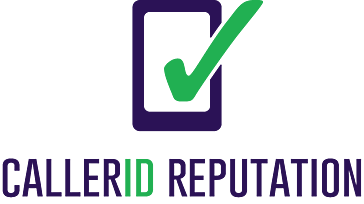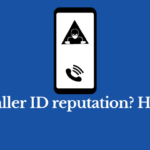Caller ID is a feature that displays the name and number of the person who is calling you, or the person you are calling. Caller ID is important for businesses, as it can help establish trust and credibility with your customers and prospects, increase your answer rates and conversions, and reduce your costs and complaints. However, caller ID can also be a source of challenge, if your business has a negative caller ID reputation.
A negative caller ID reputation means that your business’s name and number are not displayed correctly or consistently on the phones of your customers and prospects, or that they are associated with spam, fraud, or harassment. A negative caller ID reputation can have a serious impact on your business, such as:
- Lowering your answer rates and conversions, as people are more likely to ignore or reject calls from unknown, unfamiliar, or suspicious numbers.
- Damaging your brand image and reputation, as people are more likely to distrust or dislike your business if they receive unwanted, annoying, or fraudulent calls from your number.
- Increasing your costs and complaints, as you may have to make more calls to reach your customers and prospects, or deal with more disputes and legal issues.
To avoid or resolve caller ID reputation issues, you need to leverage analytics, which is the process of collecting, analyzing, and interpreting data related to your calls and caller ID. Analytics can help you measure and improve your caller ID reputation, by providing you with valuable insights and feedback on your performance and customer satisfaction. In this article, we will explain how to understand and use analytics for caller ID reputation success, and what are the key metrics to monitor and optimize.
Understanding Caller ID Analytics
Caller ID analytics are different from general call analytics, as they focus on the specific aspects of caller ID, such as name, number, verification, and reputation. Caller ID analytics can help you answer questions such as:
- How are your name and number displayed on the phones of your customers and prospects?
- How often are your calls answered, rejected, or abandoned by your customers and prospects?
- How often are your calls flagged or blocked by phone service providers or apps as spam or fraud?
- How do your customers and prospects perceive and respond to your calls and caller ID?
- How do your calls and caller ID comply with the laws and regulations that govern caller ID and VoIP?
To interpret the data related to caller ID reputation, you need to understand the meaning and significance of the metrics and indicators, such as:
- Verification status, which indicates whether your caller ID information is authenticated and validated by the phone service provider or the app. A verified status means that your caller ID information is accurate and trustworthy, and can boost your answer rates and reputation. An unverified or failed status means that your caller ID information is not confirmed or incorrect, and can lower your answer rates and reputation.
- Reputation score, which is a numerical or categorical rating that reflects the quality and trustworthiness of your caller ID information, based on the feedback and ratings from users and databases. A high reputation score means that your caller ID information is positive and credible, and can increase your answer rates and reputation. A low reputation score means that your caller ID information is negative or suspicious, and can decrease your answer rates and reputation.
- Feedback and ratings, which are the opinions and reactions of your customers and prospects about your calls and caller ID, expressed through various channels, such as surveys, feedback forms, testimonials, or reviews. Positive feedback and ratings mean that your customers and prospects are satisfied and loyal to your business, and can improve your answer rates and reputation. Negative feedback and ratings mean that your customers and prospects are dissatisfied and unhappy with your business, and can harm your answer rates and reputation.

Key Metrics to Monitor
To measure and improve your caller ID reputation, you need to monitor and optimize the key metrics that affect your performance and customer satisfaction. Some of the key metrics that you need to monitor are:
- Call answer rates, which are the percentage of calls that are answered by your customers and prospects, out of the total number of calls that you make. Call answer rates are influenced by various factors, such as caller ID information, verification status, reputation score, time of day, frequency of calls, and customer preferences. Call answer rates are important, as they indicate the effectiveness and efficiency of your calls, and the level of interest and engagement of your customers and prospects. A high call answer rate means that your calls are successful and productive, and that your customers and prospects are interested and engaged with your business. A low call answer rate means that your calls are unsuccessful and wasteful, and that your customers and prospects are uninterested and disengaged with your business.
- Frequency of flagged calls, which are the number of calls that are flagged or blocked by phone service providers or apps as spam or fraud, out of the total number of calls that you make. Frequency of flagged calls are influenced by various factors, such as caller ID information, verification status, reputation score, frequency of calls, and customer complaints. Frequency of flagged calls are important, as they indicate the quality and trustworthiness of your calls, and the level of risk and compliance of your business. A high frequency of flagged calls means that your calls are poor and untrustworthy, and that your business is risky and non-compliant. A low frequency of flagged calls means that your calls are good and trustworthy, and that your business is safe and compliant.
- Customer feedback and complaints related to caller ID, which are the opinions and reactions of your customers and prospects about your caller ID information, expressed through various channels, such as surveys, feedback forms, testimonials, or reviews. Customer feedback and complaints related to caller ID are influenced by various factors, such as caller ID information, verification status, reputation score, customer expectations, and customer satisfaction. Customer feedback and complaints related to caller ID are important, as they indicate the perception and response of your customers and prospects to your caller ID information, and the level of loyalty and retention of your business. Positive feedback and low complaints related to caller ID mean that your customers and prospects are satisfied and loyal to your business, and that your caller ID information is accurate and professional. Negative feedback and high complaints related to caller ID mean that your customers and prospects are dissatisfied and unhappy with your business, and that your caller ID information is inaccurate and unprofessional.
Using Analytics to Inform Strategy
To improve your caller ID reputation, you need to use analytics to inform your strategy, by using the data and insights to identify and resolve the issues and challenges, and to optimize and enhance your performance and customer satisfaction. Some of the ways that you can use analytics to inform your strategy are:
- Identify and resolve the technical errors or database inaccuracies that affect your caller ID information, verification status, or reputation score. You can use the analytics tools and services to check for any errors or inaccuracies in your caller ID information, such as incorrect name, wrong number, or outdated information. You can also use the analytics tools and services to check for any errors or inaccuracies in your verification status or reputation score, such as unverified or failed status, or low or negative score. You can then contact your phone service provider or the caller ID reputation service to correct or update the information, and to improve the verification status or reputation score.
- Identify and resolve the spoofing attacks or customer complaints that affect your caller ID information, verification status, or reputation score. You can use the analytics tools and services to check for any spoofing attacks or customer complaints that affect your caller ID information, such as fake or spoofed number, or unwanted or fraudulent calls. You can also use the analytics tools and services to check for any spoofing attacks or customer complaints that affect your verification status or reputation score, such as unverified or failed status, or low or negative score. You can then contact your phone service provider or the caller ID reputation service to protect or change your number, and to improve the verification status or reputation score.
- Optimize and enhance your caller ID strategy and practices that affect your call answer rates, frequency of flagged calls, or customer feedback and complaints. You can use the analytics tools and services to check the impact of your caller ID strategy and practices on your call answer rates, frequency of flagged calls, or customer feedback and complaints, such as name, number, verification status, reputation score, time of day, frequency of calls, and customer preferences. You can then adjust your caller ID strategy and practices to optimize and enhance your call answer rates, frequency of flagged calls, or customer feedback and complaints. For example, you can:
- Choose a name and number that are accurate, relevant, and professional, and that reflect your brand identity and value proposition.
- Use a verified and trustworthy phone service provider and caller ID service that support and verify caller ID information, such as STIR/SHAKEN, and that offer caller ID reputation services, such as [CallerName], [Truecaller], or [Hiya].
- Call your customers and prospects at the optimal time of day, frequency, and duration, and respect their preferences and do-not-call lists.
- Provide value and quality to your customers and prospects through your calls, and avoid spamming, harassing, or deceiving them.
Integrating Caller ID Analytics with Other Business Systems
To maximize the benefits of caller ID analytics, you need to integrate them with other business systems, such as CRM and other business intelligence systems. By integrating caller ID analytics with other business systems, you can:
- Connect the data and insights from caller ID analytics with the data and insights from other business systems, such as customer profiles, sales records, marketing campaigns, and customer service interactions.
- Automate the reporting and monitoring of caller ID analytics and other business systems, and generate real-time and comprehensive reports and dashboards that show the performance and results of your calls and caller ID.
- Use the data and insights from caller ID analytics and other business systems to inform and improve your business decisions and strategies, such as customer segmentation, targeting, personalization, and retention.
Caller ID reputation is a critical factor that affects your business success and customer satisfaction. By leveraging analytics for caller ID reputation, you can measure and improve your caller ID reputation, and enjoy the benefits of caller ID for your business. However, you also need to be proactive and strategic, and use the data and insights from caller ID analytics to identify and resolve the issues and challenges, and to optimize and enhance your performance and customer satisfaction. By doing so, you can ensure that your caller ID reputation is always positive and consistent, and that your customers and prospects always trust and respond to your calls.



